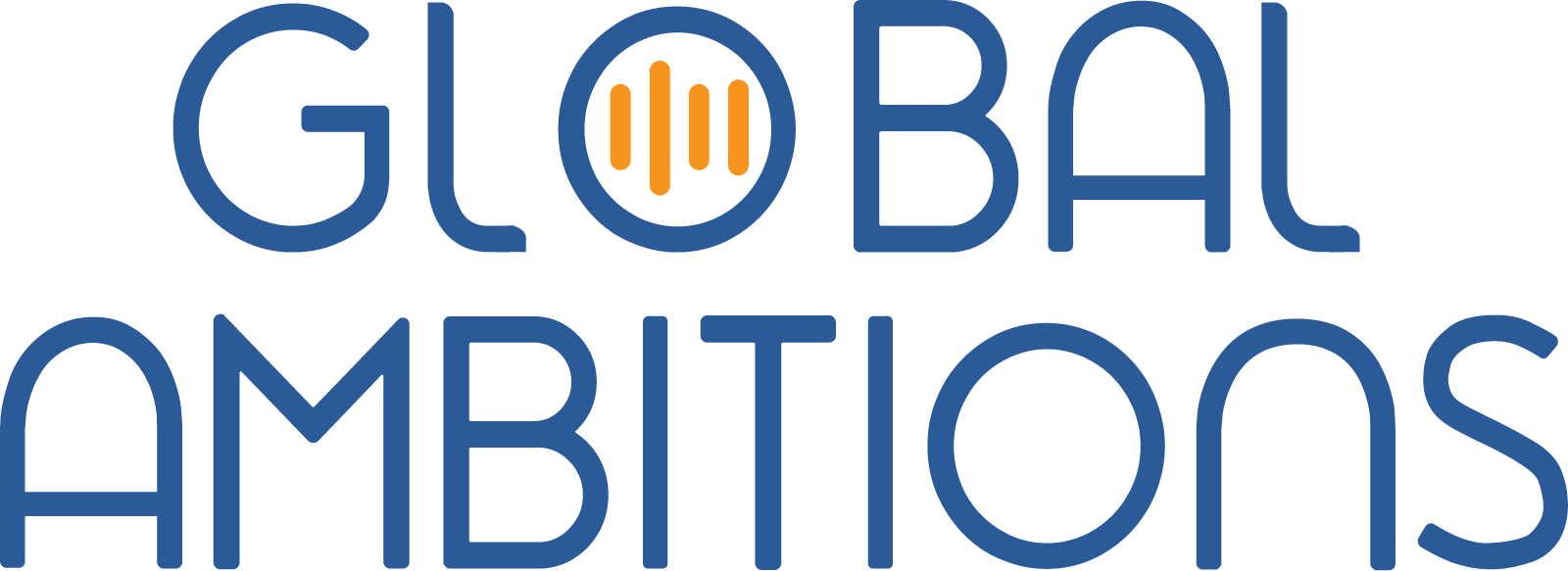With Rachel Carruther, Head of Internationalisation & Localisation at Canva
Below is a full transcript of this episode
Kim Shouler
Hi, everyone. My name is Kim Shouler and I’ll be your host for this episode of Global Ambitions. And today, I’m pleased that we’re joined by Rachel Carruthers, the head of internationalization and localization at Canva. Welcome to the program, Rachel.
Rachel Carruthers
Thanks so much for having me. And today, Rachel is going to talk to us about localization in terms of design.
Kim Shouler
So, Rachel, if you don’t mind, it’d be really great if you could introduce yourself and tell us a bit about your role and about Canva.
Rachel Carruthers
Sure. Well, thank you again so much for having me with you today. And it’s an honor to be here. I am the head of internationalization at Canva, which is an easy-to-use drag and drop design tool, essentially focused on allowing users to express their creativity and empowering the world to design as a communication tool. And yeah, when it comes to my day-to-day, I suppose, and localization at Canva, that’s what we’re here to talk about, obviously. But in a nutshell, in its essence, leading out the localization space is really about providing a Canva experience for users that feels truly local. And there are many facets to that. But essentially making sure that users feel a sense of belonging, feel a sense of representation and feel a cultural sense of creativity when they use our platform. Which is a really fun and exciting space to be in, frankly.
Kim Shouler
Yeah, no, that’s great. So within that role, what would you be able to share with us that you would say was your biggest challenge that you faced?
Rachel Carruthers
I would say that the biggest challenge, and it’s an ongoing challenge, is considering localization and the different aspects of localization outside of what we consider almost traditional localization. So UI localization, metadata, and all of this and really understanding what it means to localize a design experience because it can be so different, depending on who you user is, where they’re from, what language they speak, what culture they come from. And design is just such an expressive form. There’s really no way of kind of pinning it down.
Almost counterintuitive sometimes to try to set up a product that is localized for design because you’re almost putting your users into a box by default saying, well, you are a French Canadian, so this is what you want to design, right. Or you’re in Saudi Arabia. So obviously this is what’s important to you. So we need to make that happen. And yet, almost counterintuitively, you know, you’re kind of limiting, especially when you localize for it. So it’s always this ongoing balance. It’s quite interesting, but a fun and ongoing and fascinating challenge for sure.
Kim Shouler
Yeah, that’s great. Definitely, a lot to consider. So, I mean, how local do you go with this? Is that something that’s been a challenge as well? You’re localizing into different languages for different locales, but how local do you try and go?
Rachel Carruthers
As local as possible. So that’s kind of the one right now where we’re definitely dipping our toes into hyper localization for markets like Japan and South Korea. We’re not there yet, but we’re starting to map a lot of this out, taking the UI and the use of the product and really adapting, obviously the language and the tone of voice. And I think that’s quite important to use in those languages. But making sure that we have things like local publishing endpoints for local social media platforms available in there as well.
So, for example, in Canva, you can create a social media campaign so you can then post to Instagram, post it to Facebook, and a place like Japan where Line is actually the most pervasive social media platform. I think half of Japan, upwards of eighty-six million people use Line. That means it needs to be a part of the everyday experience in Canva for Japanese users. Right. So that’s kind of getting into the specific use cases, meeting users where they already are. So everything from customizing products to also looking at the content that’s in the editors.
I’ve spoken about this before, but we’re focusing a lot on template content that’s not just localized, but then market bespoke as well. So generated for and by the market actually. And you see things like localized currency and then localized pricing are quite important. But can that of being in over 100 languages, sadly we’re not hyper-local in all of those. I wish we were. That’s kind of the big goal. Right.
So for a good number of our languages we have basic localization. Which I think is the bread and butter. The UI localization, localized search, and discoverability, everything like that in the basics, but just kind of the expectations of what the user would need to navigate the products. But slowly but surely, we’re taking a lot of our key strategic markets from this place of internationalization, kind of all the way to globalization and find this pyramid, if you will, to that cherry on top. That is user experience.
Kim Shouler
That’s great. Yeah. So really, how have you gone about working out what design means in each market?
Rachel Carruthers
How have we gone about that? I mean, I would say we’re still going about it constantly and we do that a few different ways. I mean, we have teams that are on the ground who are able to give us local insights, anecdotal insights, strong user experiences to kind of tell us what feels natural and creative for them and more kind of research and insights of what we do. Partner with a few agencies that help us better understand the landscapes and the users and attitudes towards design.
So what we found in working with a few of our agencies and doing this research is very roughly you can look at users kind of through a few different lenses. One being more global audiences. And these tend to be markets and audiences that are generally more globally connected, whether that’s digitally or what have you, and have kind of more of a sense of design for design thinking’s sake. I think if that makes sense.
And there’s also kind of a category of market. So they fall into much more local nuances and much more locally driven design aesthetics. I think we can see that reflected a lot in markets like Brazil or even Mexico, where the kind of creativity and expression is so vibrant and so just has this super local kind of touch and feel. You can’t miss it.
Kim Shouler
You can’t mistake it.
Rachel Carruthers
Yeah. And so kind of understanding how different markets operate in the larger context of the world and where they kind of fit into these categories and then understanding what like I said, what design means in those markets. Is design a means for creativity, self-expression? Or is design considered an approach to something. When you think of markets like Germany, there’s a lot of that and everything like that. You’ve got this school of design that is really about the approach to design within the design itself, which is. Yeah, anyway, this is all quite technological now. But you really kind of understand… that helps you understand how your users are approaching design and therefore how they fit in your products, which I think has been valuable to us as well.
Kim Shouler
Right. That’s really interesting. So in your journey has something come up that you think is a good thing to share as advice for others or maybe a warning about something that happened you didn’t expect?
Rachel Carruthers
I would say that in this kind of next wave of globalization that we’ve been in over the last few years, the biggest obstacle, I would say, is ensuring that we aren’t imposing our own ideas of what design means and what creativity means onto our users in different markets. It’s super easy for anybody to look at a design or piece of art and say, oh, that’s really bad. Or that out. Or oh, that’s amazing. And subjective design will always be subjective. Art will always be subjective. Right. And that’s why, as I said earlier, trying to pinpoint and create a roadmap or to categorize anything is almost counter-intuitive to what we want. So it’s a constant obstacle.
But it’s something that I think once you’re aware of, you’re able to kind of self navigate a bit more. And we question ourselves in not just why we’re doing some things, with regards to the way that we’re doing, but mostly just keeping certain, I suppose, checks in place, if you will. That seems almost like an oversimplification. But because we invest so much time kind of looking into these markets, researching these markets, understanding the design context, we’re able to really try to keep our own egos at the door and our own expectations and desires even at the front door and really understand we’re building this for our users. When we’re building a product, it was constantly rearticulating it for what made them feel comfortable or they’d never be happy.
Kim Shouler
So is this something you can share with us that you feel like you or your team did really well?
Rachel Carruthers
Yeah. So something that we definitely strive for and look, to be completely honest with you, something that’s absolutely still a work in progress is to ensure that our users are being and feeling represented in our content. So obviously the base kind of example, there are templates, but when somebody is designing a template and they’re making an invitation for their child’s birthday and they’re looking for a photo of a family. Right. They can’t find families that look like them. And it’s an incredibly jarring experience.
Yeah, it’s really unfortunate one as well. And it’s almost completely against what you want to be doing for a time when you’re trying to engage your users. But it’s also completely against what we feel at Canva with empowering the world to design and creating a platform for diversity and representation. Right. So it’s something that we’re working incredibly hard towards. We still have a lot of room to go, but we have a lot of resources now at our disposal.
We’re collaborating with creators and contributors around the world, photographers, illustrators, graphic designers to help close that gap and to really, again, continue to better understand how to better serve and represent our incredibly diverse user base.
Kim Shouler
Yeah, no, definitely. So within Canva, how have you set up the team to enable that to happen? Is there anything there, what you feel like, you know, we did this really well or this really helped us along our way?
Rachel Carruthers
Yeah, absolutely. It’s been a bit of a journey over the last four years with how our team has actually been structured and organized. At first we were kind of like a pod sitting adjacent to a lot of the product space. And since time it has evolved to more of a hub and spoke model within Canva itself. So we’re actually now sitting more closely with the marketing side of things internally and that’s where our home is. But what has worked well is that a lot of our localization specialists are embedded in different areas throughout the business.
And what that means is that they attend meetings, they help plan team goals for the season. They are basically there as the wonderful, very vibrant localization champion, making sure that, I mean, there are international user champions as well, making sure that they keep the international user experience front of mind for folks. And I think we can all attest to that. So it’s always a bit of a challenge, I think, for us localization teams and most companies when they’re globalizing their products. But this attitude and this structure of embedding into different groups, again, it helps keep localization in front of mind, but then it helps ownership of localization within those teams as well and helps to create excitement about possibilities.
And when you’re talking to teams whose job it is to say up revenue, you can say, well, if you’ve actually taken this thing instead of just translating it into German and into Italian and Spanish, here is a kind of USPs, the unique selling points for Canva in these markets. Here’s what users actually need to design. Here’s what they’re looking for. And you can actually just do your messaging towards those USPs. That means more revenue for you because people are ready to convert. So, you know, you really bring the power into their hands. And it’s wonderful to educate.
We get to empower and they get to, you know, break down walls. And it just has fostered a lot of collaboration, Which is a good point as the best ideas are born out of strong collaboration and a lot of cost-cutting company initiatives, too, which just is really exciting because from the localization perspective, you kind of get to have this lens on everything because you’re working with everybody. And you get to connect people in the business saying, hang on, you’re actually planning to do this. She was talking about doing this. You guys should probably connect. And so it’s fun to drive that collaboration, get the whole company thinking globally.
Kim Shouler
That’s great. Yeah. Well, thank you, Rachel. You’ve given us some really great insights. It’s been great to talk to you.
Rachel Carruthers
Great to talk to you, too.
Kim Shouler
Thanks so much again.
Rachel Carruthers
Thank you.

Rachel Carruthers
Head of Internationalisation & Localisation at Canva




